Title : Antimicrobial resistance in pathogens isolated from raw milk and fresh goat cheese
Abstract:
The objective was to identify potentially pathogenic microorganisms, as well as their susceptibility to antimicrobials, from samples of milk and cheese produced on family farms in the northern, central and southern regions of Mexico. Two farm units from the state of Durango, two from Querétaro and two from Campeche were sampled. 2 samples of raw milk were taken and 2 samples of cheese made from the sampled milk tank. The samples were plated on Blood and MacConkey agar. The susceptibility profiles of the isolated strains to select antimicrobials were determined by the Kirby−Bauer method, using for Gram positives: Ampicillin (AM), Cefotaxime (CFX), Ciprofloxacin (CPF), Clindamycin (CLM), Erythromycin(E) , Penicillin (PE), Tetracycline (TE), Cephalothin (CF), Dicloxacillin (DC), Gentamicin (GE), Sulfamethoxazole Trimethoprim (STX) and Vancomycin (VA), while for Gram negatives the following were used: Ampicillin (AM), Carbenicillin (CB), Cephalothin (CF), Cefotaxime (CFX), Ciprofloxacin (CPF), Chloramphenicol (CL), Nitrofurantoin (NF), Amikacin (AK), Gentamicin (GE), Netilmicin (NET), Norfloxacin (NOF) and Sulfamethoxazole Trimethoprim (STX). Descriptive statistics were performed on the data, while the Mann−Whitney U test was used to compare the resistance profiles between microorganisms isolated in raw milk and fresh cheese. Staphylococcus aureus was isolated from raw milk in 5 of the 6 establishments sampled, in all 6 strains of Coagulase Negative Staphylococcus (CNS) were isolated, Streptococcus dysgalactiae and S. agalalactiae were isolated, in 2 Listeria ivanovii and Listeria welsmeri and Bacillus cereus. In the case of Gram negative pathogens, E. coli was isolated in all samples, in three farms Pseudomonas aeruginosa, in two Proteus vulgaris and Proteus mirabilis, and in one Klebsiella pneumoniae. Staphylococccus aureus was isolated in all cheeses, as well as various species of Streptococcus. E. coli was isolated in all samples, Proteus mirabilis was isolated in 4 samples, Klebsiella pneumoniae, Citrobacter freundii and Enterobacter aerogenes were isolated in 3 samples. 50% of the Gram−positive microorganisms from raw milk presented resistance to antibiotics such as AM, CFX, CLM, PE, TE, CF and DC, all Staphylococcus, Streptococcus and CNS presented 100% resistance to PE. Of the Gram−negative bacteria isolated from raw milk, 71% of the microorganism’s showed resistance to AM, CB, CF, CF, NF and GE; P. aeruginosa was resistant 100% to AM and 80% to AK. 83% of the Gram−positive pathogens isolated from cheeses were resistant to AM, CFX, PE, TE, CF and DC; Streptococcus dysgalactiae and E. faecalis were resistant to AM, as well as 100% of S. aureus, S. dysgalactie, S. agalactiae and SCN were resistant to PE. Gram− negative microorganisms, 75% showed resistance to AM, CB, CPF and GE; 100% of the E. coli were resistant to AM and 80% of the P. aeruginosa were resistant to AM, NF and NOF. When comparing the general resistance averages for bacteria obtained from milk versus those obtained from cheese, no significant difference was found highlighting the impact of the lack of good practices, livestock and manufacturing in these farms.



